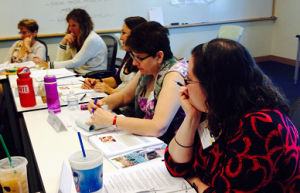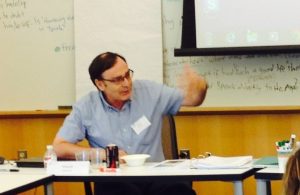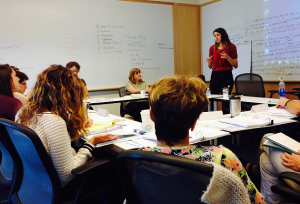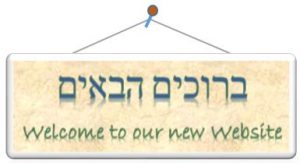Step inside and see the changes
There are many new features to see, so take some time to look around! Our homepage offers you news from the field, notice of upcoming events, opportunities to learn more about this innovative approach to Jewish Education and the work educators engaged in this network are doing. A map of the USA shows where people are using this approach across the country.
For members of the network, we have new features in the members area – logging in will continue to give you access to all our curricular resources, but now there is more. Members can
join existing working groups, initiate new groups around common interests, and access our member directory.
Members connecting with Members
- The membership directory allows members to find one another and connect . Members can update their information by updating their personal page.
- Member profile page allows you to share who you are and your interests with other members – and offers you a way to find others who might collaborate around our work.
- Who is on line? Once you log in, your picture shows that you are online to others who are also logged in. An easy way to enable communication. See someone you have been meaning to say “hi” to? Click on their picture and send them a note..
Discussion Groups:
Any member can create an interest group to collaborate with other members.
No permissions, no mediation – you can start it by opening a group yourself.
Groups can share documents, create forums, (and more).
Groups can be created in different ways:
- open (for all members to join),
- closed (where interested members contact the group facilitator) or
- private (good for groups working on a project with a fixed group of people).
- For a group to be maintained on the site, it needs to have 5 members.
Your Personalized calendar and the Engaging Texts Calendar
When visitors come to the site, they will see all the public events on the Engaging Texts calendar – this includes workshops, and special events.
When members log on their calendar becomes personalized, gathering all the dates on the calendars of groups they are part of and putting them in one location. A larger version of this with color coding possiblities can be accessed from the members area. Not sure when an event is happening, or when your community of practice or working group is next meeting? Look it up on your calendar!






